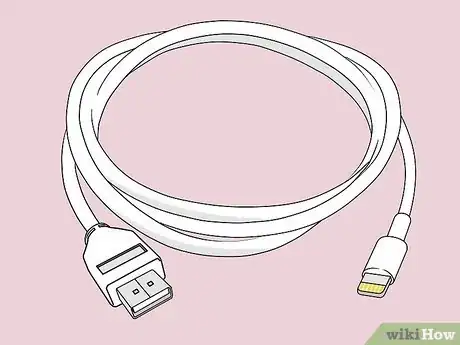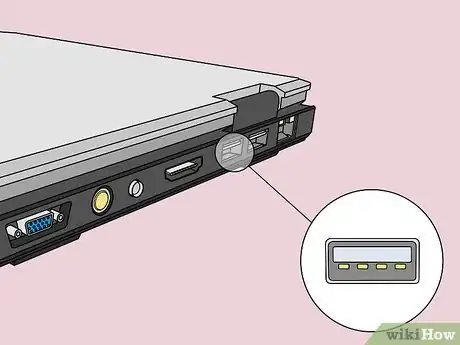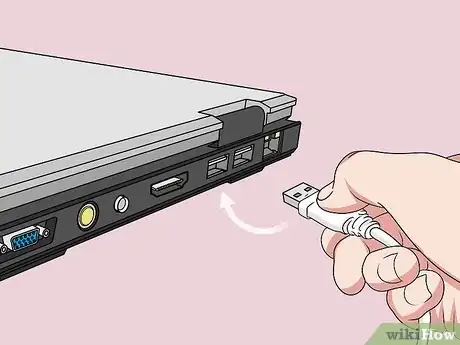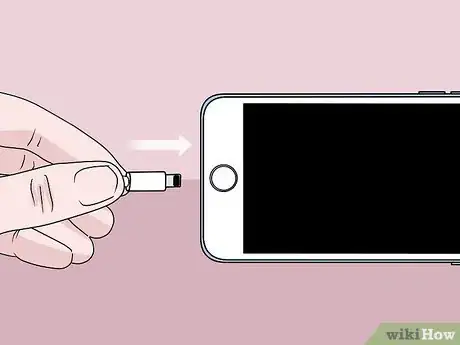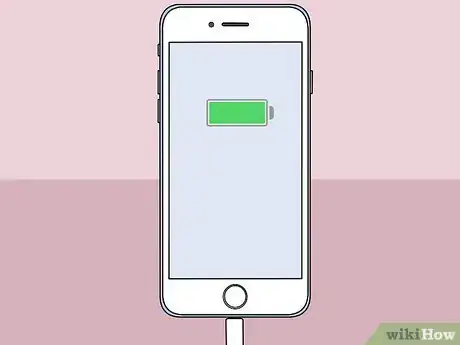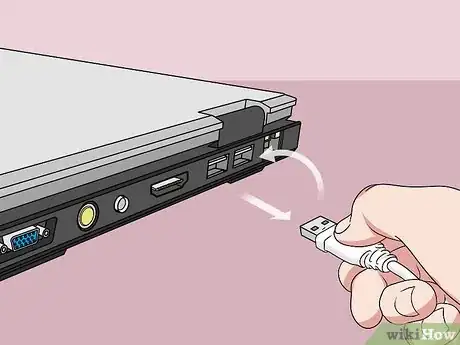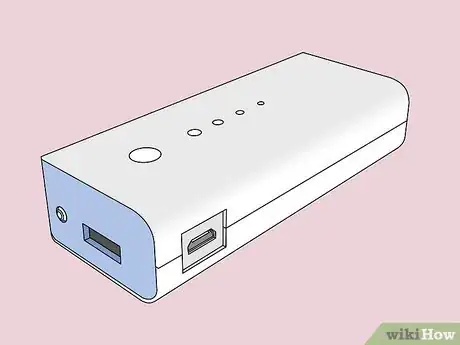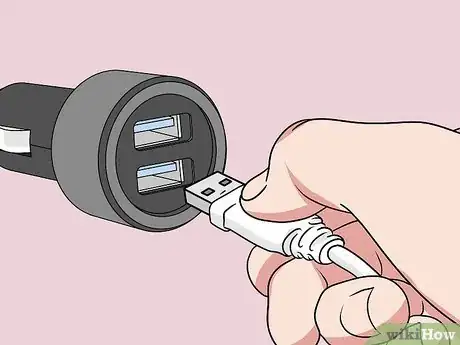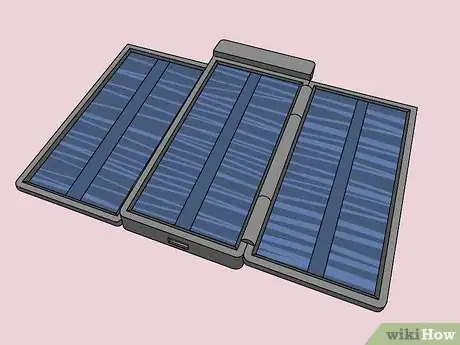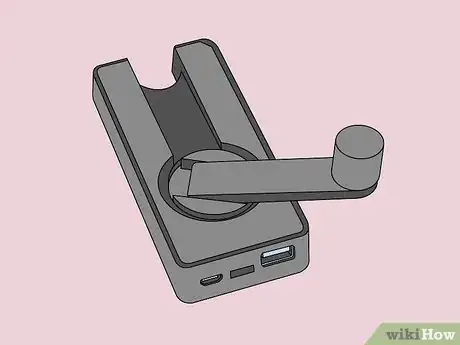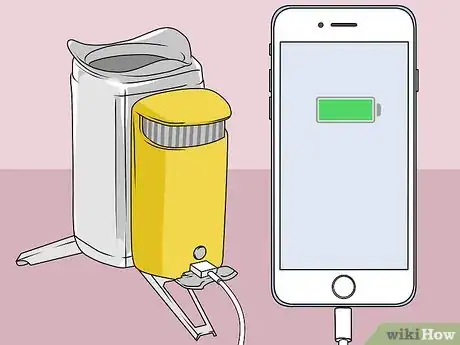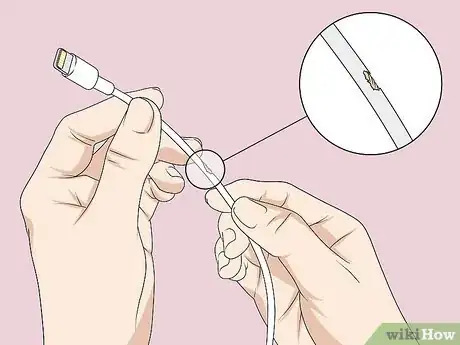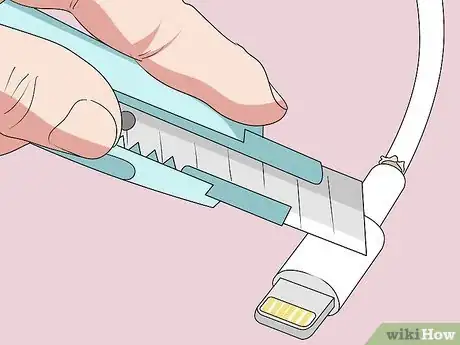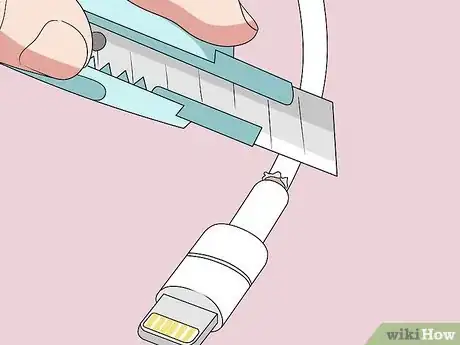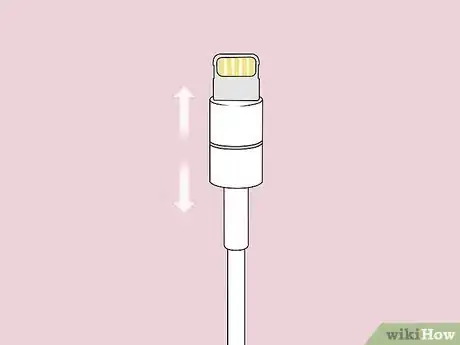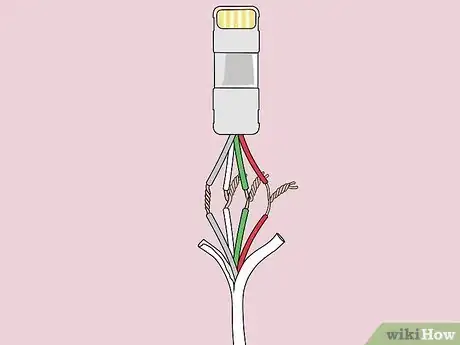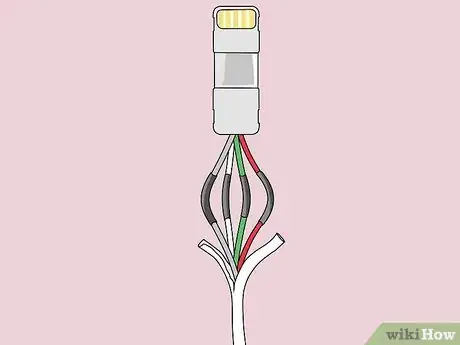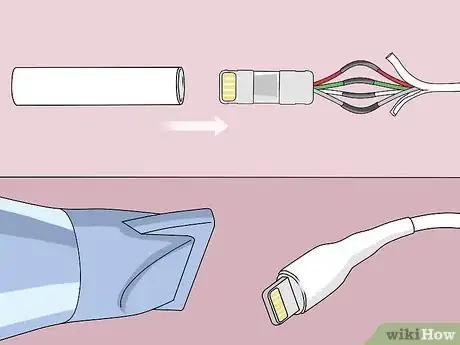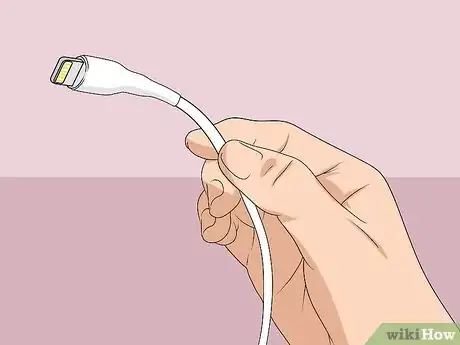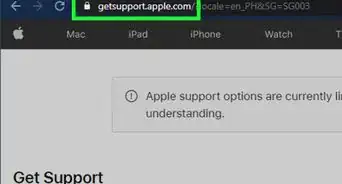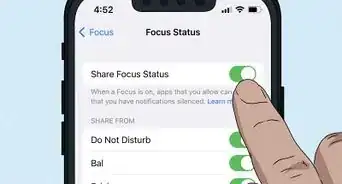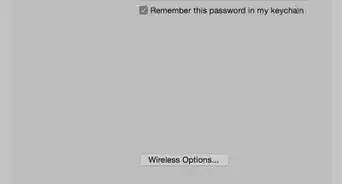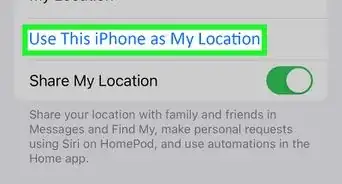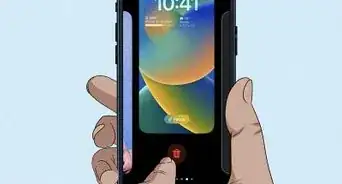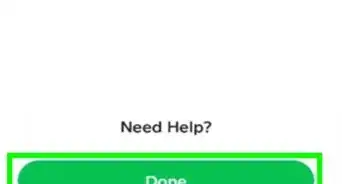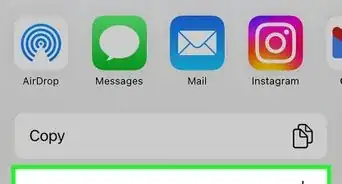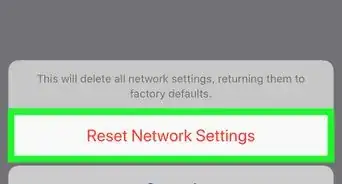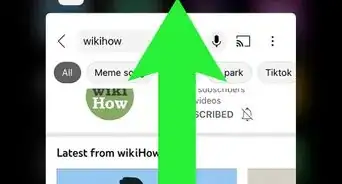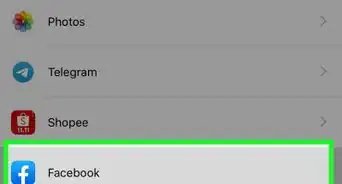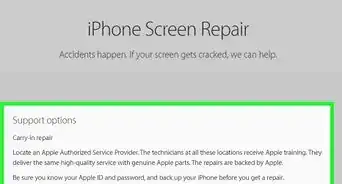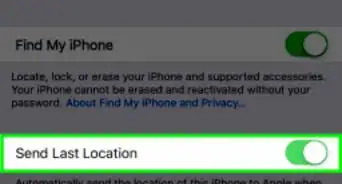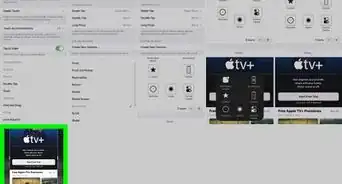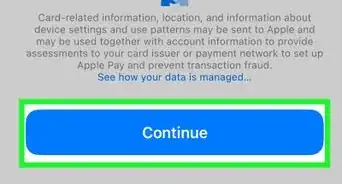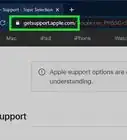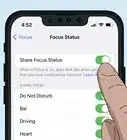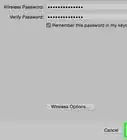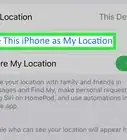This article was co-authored by wikiHow staff writer, Jack Lloyd. Jack Lloyd is a Technology Writer and Editor for wikiHow. He has over two years of experience writing and editing technology-related articles. He is technology enthusiast and an English teacher.
The wikiHow Tech Team also followed the article's instructions and verified that they work.
This article has been viewed 739,180 times.
Learn more...
This wikiHow teaches you how to charge your iPhone without using the charging block which plugs into a wall socket. The easiest way to charge your iPhone without the block is by using the charger cable with a USB port on your computer. If necessary, you can use various portable chargers to charge your iPhone via its cable. Keep in mind that you must have an iPhone charger cable in order to charge your iPhone.
Steps
Using a USB Port
-
1Make sure you have your iPhone's charger cable. The iPhone's charger cable, when separated from the charging brick, has a USB connector at one end. You can use this cable in conjunction with a USB port in order to charge your iPhone.
- iPhone 8, 8 Plus, 9, 10, 11, 12, and 13 pro and pro max models can also use wireless chargers, which have wide, flat dishes on which you can place your iPhone back-down to charge it.
- You cannot charge your iPhone without a charger cable.
-
2Find a USB port. The majority of USB ports—the rectangular ports found on computers—can be used to power USB items such as your iPhone's charger.
- USB ports which aren't connected to a computer (e.g., those found on the back of TVs or in hubs in places like coffee shops or airports) are always powered unless they're broken.
- If you have an iPhone 8 or newer, you'll need to find a USB-C port. These are rarer than the USB 3.0 ports found on most computers, behind TVs, and so on. If you can't find a USB-C port, try using a portable charger.
Advertisement -
3Plug your iPhone's cable into the USB port. The USB side of the iPhone's charger should only fit one way into the USB port, so don't force the connection.
- If you're using a USB-C port, you can plug in the charger's USB side in any direction.
-
4Attach the cable to your iPhone. Plug the free end of the iPhone's charger into the Lightning charging port at the bottom of your iPhone's housing.
- If you're using an iPhone 8, 8 Plus, or X, you can also use a wireless charging port or mat by placing your iPhone back-down on the charging surface. If you don't have one, you can typically find these chargers in public spaces such as airports or cafes.[1]
- If you're charging an iPhone 4S or older, you'll need to make sure the rectangular icon on the base of the charging connector is on the same side as the iPhone's screen.
-
5Wait for the charging icon to appear. Within a couple of seconds of plugging in your iPhone, you should see a colored battery icon appear on the screen, and the phone should lightly vibrate.
- You will also see a lightning bolt icon appear to the right of the battery indicator in the top-right corner of the screen.
-
6Try a different USB port. Not all USB ports support charging. If your iPhone isn't charging within a few seconds of connecting to the USB port, disconnect the charger and try a different USB port.
Using a Portable Charger
-
1Buy a portable battery pack. Battery packs (also known as power banks) can be charged ahead of time and then used with a USB cable (e.g., your iPhone's charger cable) in order to charge a mobile item to 100 percent multiple times.
- Make sure the battery pack is iPhone-compatible before purchasing it. If the packaging doesn't explicitly state that it will work with iPhones, it probably isn't iPhone-compatible.
- Most battery packs come pre-charged, so you can typically just walk in to a store, buy the pack, and charge in minutes.[2]
-
2Use a car charger. Chargers which plug into your car's cigarette lighter aren't new technology, so look for a car charger which includes a USB port. You can plug this charger into the cigarette lighter port and then plug your iPhone's charger cable into the USB port on the back of the charger.
- You should be able to find these chargers in most retail stores that have tech departments, or you can search online in places like Amazon and eBay.
- Many of these chargers include two USB ports, making it easy for you to charge multiple items.
-
3Try a wind- or solar-powered charger. You can find such chargers in outdoor supply stores and online. Most wind and solar chargers work the same way: you set up the charger to store power (either by spinning a wind turbine or receiving sunlight) and then plug your iPhone into the charger once its battery is full.[3]
- Both wind and solar power are conditional, but if you live in an area with inconsistent power, they offer a viable alternative.
- Some wind and solar chargers will only charge your iPhone as they receive power, so check your charger's documentation before attempting to charge your iPhone.
- Neither of these chargers offers a particularly fast charge, but you'll be able to charge your iPhone's battery to 100 percent within a few hours.
-
4Invest in a hand crank charger. Like wind- and solar-powered chargers, hand crank chargers can be purchased online or in some tech department stores. The premise is fairly straightforward: you plug your iPhone into the hand crank via its charger cable and then start cranking away.
- Naturally, using a hand crank to charge your iPhone will take significantly longer than wall socket charging.
- This is a good option if you're hiking or otherwise removed from a reliable source of power.
-
5Use a campfire charger. There are several chargers that can attach to your camping pots and pans that absorb heat from your campfire and turn it into energy. You can set the pot on the campfire and plug the cable into your iPhone, thus charging it while you cook dinner.
- Outdoor supply shops such as REI and Dick's may stock these chargers, though your best bet is to search online.
- Be warned that using this method places your iPhone at a greater risk of being damaged due to overheating.
Repairing a Fraying Charger
-
1Determine whether you can fix your cable. If your charger cable has a lump or a known frayed wire near the charger end which prevents it from charging your iPhone when plugged in, you can use a pair of wire strippers and some shrink tubing to fix the cable.
- If you don't already have the shrink tubing available, it's probably cheaper to buy a new cable instead.
-
2Remove the casing from the frayed area. Using a sharp knife, make an incision along the frayed section of the cable, then cut around each end of the incision to remove the piece of casing.[4]
- Be careful not to cut through the shielding when you do this.
-
3Cut through the frayed part of the cable. Once you've identified the section of the cable that's frayed, make a cut directly through it. This will result in the cable being cut in two pieces.[5]
-
4Strip the wires down to bare metal. Use the wire strippers to remove the protective shielding and expose the three wires inside of one of the chopped cable's ends, then repeat with the other end. Once you've done this, use the wire strippers to remove a section of rubber shielding from each of the exposed wires.
-
5Twist the matching cables together. Using the bare metal wire that's now exposed, connect the two parts of the charger cable back together by twisting the red wires together, then repeat with the black wires and the white wires.
- Make sure you don't accidentally twist non-corresponding colors together.
-
6Cover any bare wires with electrical tape. To prevent the bare ends of the wires from touching other wires and shorting out, wrap each connection in its own piece of electrical tape.
- For example, you'll use a piece of tape for the red wires, a piece for the white wires, and so on.
-
7Apply the shrink tubing. Now that your two halves of cable are connected and protected, slide the shrink tubing over the exposed area and apply heat to it to prompt it to shrink. Once the tubing has shrunk to fit your charger cable, the cable should be usable.
- This isn't a permanent fix. After repairing your charger, consider getting a new one as soon as possible.
-
8Finished.
Community Q&A
-
QuestionI got a iPhone charger at a gas station and now it says that it might not be reliable with my phone. What do I do?
 Community AnswerIf the charger is not compatible with your phone, don't use it--you could permanently damage your phone.
Community AnswerIf the charger is not compatible with your phone, don't use it--you could permanently damage your phone. -
QuestionWhat do I do if my phone doesn't charge with any charger?
 Community AnswerFirst just take a flashlight or something and shine it into the port. If there's any gunk, just gently clean it with a new toothbrush. If that doesn't work, take it to a phone store to get it checked out.
Community AnswerFirst just take a flashlight or something and shine it into the port. If there's any gunk, just gently clean it with a new toothbrush. If that doesn't work, take it to a phone store to get it checked out. -
QuestionHow do I clean an iPhone charging port?
 Community AnswerApple technicians use wire bristles, but you can also use a new toothbrush to gently scrub the port.
Community AnswerApple technicians use wire bristles, but you can also use a new toothbrush to gently scrub the port.
Warnings
- Wireless chargers can cause things like credit cards to stop working properly. If you keep your card(s) in the back of your iPhone, make sure you remove them before placing the iPhone on the charger.⧼thumbs_response⧽
- There is no way to charge your iPhone without connecting it to an iPhone charger cable or placing it on a wireless charger (iPhone 8 and up only).⧼thumbs_response⧽
- Other commonly recommended methods of charging, such as microwaving your iPhone or wrapping it in tinfoil and placing it outside, are dangerous and will only serve to harm your iPhone.⧼thumbs_response⧽
References
- ↑ https://support.apple.com/en-us/ht208078
- ↑ http://www.digitaltrends.com/mobile/best-portable-battery-chargers/
- ↑ http://www.macworld.com/article/2086548/review-seven-off-the-grid-chargers-for-your-portable-devices.html
- ↑ https://www.technobezz.com/fix-iphone-wont-charge/
- ↑ http://blog.iresq.com/fix-broken-ipod-charging-cord
About This Article
1. Find a USB port for your iPhone's charger cable.
2. Plug one end of your iPhone's cable into the USB port.
3. Plug the other end of the cable into your iPhone's charging port.
4. Try a different USB port if the first one didn't work.
